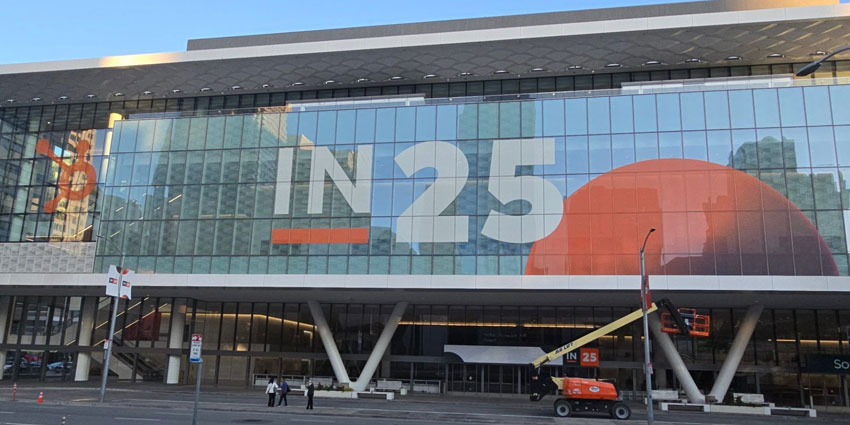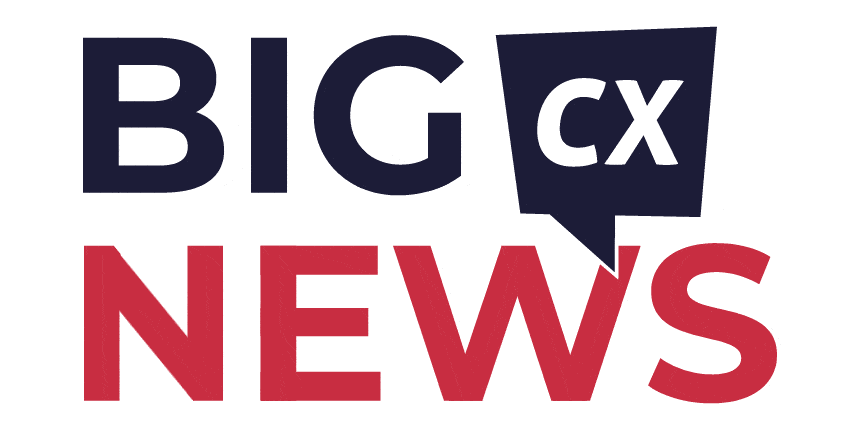HubSpot is a tech provider that has done an excellent job of establishing a customer community and acting on feedback from it.
In doing so, it has honed in on the requirements of its sweet spot: the midmarket.
Companies in the midmarket don’t typically have the skillset or time to configure innovations, like AI agents, from scratch.
Instead, they typically want pre-built innovations to drop into their platforms, customizing them to their business, teams, and needs.
HubSpot is following that path, not jumping from the latest hot trend to the next.
While some may frame HubSpot as lagging the likes of Salesforce, its customers can match its speed, steadily advance, and prove results.
The announcements at HubSpot INBOUND 2025 aim to help its customers take their next steps.
From new data and configure, price, quote (CPQ) solutions to pre-built AI agents and playbooks, here are the top ten announcements from the event.
1. HubSpot Debuts an All-New Data Hub
CRM platform providers have battled with unstructured data management for decades due to various challenges, often relating to data volumes, scope, and quality.
At INBOUND 2025, HubSpot released a new Data Hub in beta to tackle the issue head-on.
Data Hub aims to combine “all” data from across the front office (and beyond), centralizing structured, unstructured, and external sources into a single data foundation.
In doing so, it takes “every” data signal from across service, sales, and marketing, scouring warehouses, databases, documents, and apps.
From there, it automatically detects trends in the data and suggests connections. That allows businesses to piece together more complete customer profiles, while boosting automation efforts, segmentation strategies, and reporting across the HubSpot platform.
Indeed, HubSpot promises that Data Hub will tell a more “complete story” of the customer journey.
Meanwhile, Data Hub should lessen the load on customer-facing teams by equipping them with tools to fix common data quality issues. These include duplication, irregular formats, and inconsistencies.
2. Smart CRM Gets “Reimagined” for Hybrid Human-AI Teams
Data Hub will sit inside Smart CRM, HubSpot’s ecosystem of Engagement Hubs. These span service, sales, marketing, commerce, content, and operations.
As part of the Smart CRM platform, it will bolster that single pane of glass customer view.
Yet, it’s not just Data Hub that will do so. Instead, HubSpot has embedded a new capability to automatically catch and save data from the customer conversations happening across its Hubs.
Leveraging this “Conversational and Intent Enrichment” capability, companies can automatically update customer records with new intelligence, so every call, email, and meeting adds new context to the single customer view.
Additionally, HubSpot is introducing a “Smart Insights” tool to surface particularly useful new insights from across the CRM platform, so CX leaders don’t need to go digging through reports.
Finally, new “Flexible CRM Views” will allow users to visualize customer records in new ways, whether via a table, chart, or custom design.
Each of these three innovations is now in beta and, per HubSpot, highlights how it’s reimagining Smart CRM for hybrid human-AI teams.
3. HubSpot Unveils 18 New Breeze Agents
Announced at INBOUND 2024, HubSpot Breeze is a suite of AI solutions available across the Smart CRM platform.
Breeze includes a collection of AI agents, aptly named: Breeze Agents.
HubSpot announced 18 new Breeze Agents in beta at this year’s event. These include seven for marketing, six for sales teams, and five for customer service, as the chart below shows.

These join the 15 “ready-to-work” Breeze Agents already generally available.
At INBOUND 2025, HubSpot spotlighted three specific examples customers are finding particularly beneficial: its Data Agent, Customer Agent, and Prospecting Agent.
The Data Agent scours CRM data, transcripts, files, and external web sources to research and answer custom questions about customers. Answers taken from the web can be added to the Smart CRM.
Meanwhile, the Customer Agent serves go-to-market teams, answering their questions, quantifying leads, and communicating with customers across channels. In doing the latter, it leverages CRM data for personalization and can automatically resolve over half of customer interactions, according to HubSpot.
Lastly, there’s the Prospecting Agent. This works like a sales rep, automating tasks like monitoring buying signals from prospects, researching target accounts, and sending personalized outreach.
4. New Assistants Enter the HubSpot Breeze Party
While HubSpot first offered Breeze Copilot across its individual Hubs, it now provides a ubiquitous Breeze Assistant that works alongside users as they navigate HubSpot.
In doing so, the Breeze Assistant remembers the user’s preferences as it performs “dozens” of tasks, like conducting research that spans CRM solutions and prepping for meetings.
Additionally, HubSpot is offering Custom Assistants. Companies can train these assistants on their business processes, documents, and best practices to automate specific tasks for their employees.
For instance, a marketing team may build a Custom Assistant that works alongside associates to update specific landing pages. Yet, possible use cases span the Smart CRM ecosystem.
5. The Breeze Studio & Marketplace Also Go Live
HubSpot customers will soon be able to discover, scout, and deploy all of HubSpot’s Breeze Agents and Assistants via the new Breeze Marketplace, which is now in public beta.
While each Breeze Agent is pre-configured for particular use cases, businesses can customize each AI agent and assistant to meet their specific requirements.
How? By visiting the new Breeze Studio, which has also entered public beta.
Within the Studio, brands can upload knowledge sources, define guidelines, and outline processes, enabling Agents and Assistants to function as team members who truly understand the company.
6. HubSpot Introduces a CPQ Solution to Commerce Hub
ServiceNow added a CPQ solution to its CRM platform after its April 2025 Logik.ai acquisition. Now, HubSpot has quickly followed suit.
Indeed, it added an “AI-powered CPQ” to Commerce Hub, which is again available in beta.
The CPQ takes deal context and conversational data to draft branded price quotes, which sales reps can tailor, via a drag-and-drop interface, and send off to customers.
From there, the customer can review the quote, accept, and pay from one page.
Meanwhile, the sales rep will receive an alert when the customer views, shares, and responds to their quote.
Those are the core capabilities. Yet, the CPQ also comprises a Closing Agent that can help to answer any questions the buyer might have about the quote, competing products, and possible discounts.
Finally, there’s also a “Product Builder and Flexible Approvals” capability. That allows the seller to tailor the CPQ to their business, includes marking fixed-price items, creating complex tiered product structures, developing customer approval workflows, and more.
7. HubSpot Tackles Sales Busy Work
The new CPQ will assist sales reps who still calculate prices manually, navigate spreadsheets, and rely on email chains. Yet, HubSpot has made several other moves to improve the sales rep experience.
These come in the form of new updates to Sales Hub, which are (once again) available in beta.
Two of the new updates stand out.
The first is new meeting assistance functionality, with AI automating various tasks that sales reps perform before, during, and after customer conversations.
Before, it will handle prep by analyzing the customer’s previous conversations, taking context from their deal history, and conducting ad-hoc research. During the meetings, it will capture key insights and action items. Finally, it will send personalized summaries to participants and isolate next steps after the interaction.
The other standout capability is a new tool that analyzes meeting transcripts to spotlight deal risks that could impact the rep’s pipeline. That enables proactive, preventative action.
8. HubSpot Launches a Growth Playbook for Marketers
As Yamini Rangan, CEO of HubSpot, stated during the company’s latest earnings call, marketing us experiencing “its biggest shift in decades.”
To help marketing leaders navigate that shift and keep their funnel full, HubSpot introduced Loop, a playbook for growth in the AI era.
Loop is the playbook that HubSpot uses itself, comprising four interconnected stages.
The first stage is “express“. Here, marketing leaders should “express” the brand’s taste, tone, and point of view. The Breeze Assistant may help, analyzing VIP customers and creating a style guide.
Next is “tailor“. In this stage, brands focus on how they can customize content so that it’s relevant and aligns with customer preferences. That could involve using AI-powered segmentation to develop audiences based on intent and fit signals.
Third is “amplify“, with HubSpot encouraging brands to diversify content across human- and AI-led channels. The vendor’s AEO (answer engine optimization) Strategy Tool can help here to pinpoint content in need of a refresh.
The final stage is “evolve” by running back through this strategy and iterating effectively. Again, HubSpot recommends one of its AI tools here: Email Engagement Optimization. The Marketing Hub feature helps predict which recipients are most likely to engage.
9. A New Marketing Studio Comes to Marketing Hub
Alongside the new Loop Playbook, INBOUND 2025 has brought many more innovations to marketers. Many of these, available in beta for Marketing Hub, will aid customers in bringing Loop to life.
First is a new visual canvas that enables marketing teams to collaboratively plan, create, and execute campaigns. It also provides AI suggestions to optimize results based on past performance.
Next is a “Segments + Personalization” feature that analyzes data from the CRM that pertains to a web visitor. It then segments and personalizes the site for that individual, with web pages and call to actions (CTAs) more likely to speak to them.
Finally, there’s “AI-Powered Email”. With this, marketers can personalize every email within a campaign, so individuals receive unique content and messages relevant to them. The feature will also predict who will engage and when.
10. HubSpot Confirms a New CRM Connect for Google Gemini
In press materials shared before INBOUND, HubSpot referenced three CRM connectors for large language models: ChatGPT, Claude, and Gemini.
While HubSpot previously announced the former two integrations, the Gemini connector appears to be a new addition.
These connectors pull data from HubSpot into the familiar AI tools for analysis. They can then draw any new insights they discover into the CRM for data enrichment.
So far, HubSpot is the only CRM vendor to offer such connectors. Yet, others will likely follow. When they do, they’ll likely pose some tough questions for today’s conversational intelligence market.
CX Today will be posting overviews like this through event season. To keep a pulse on what’s happening in the space, subscribe to our newsletter.







